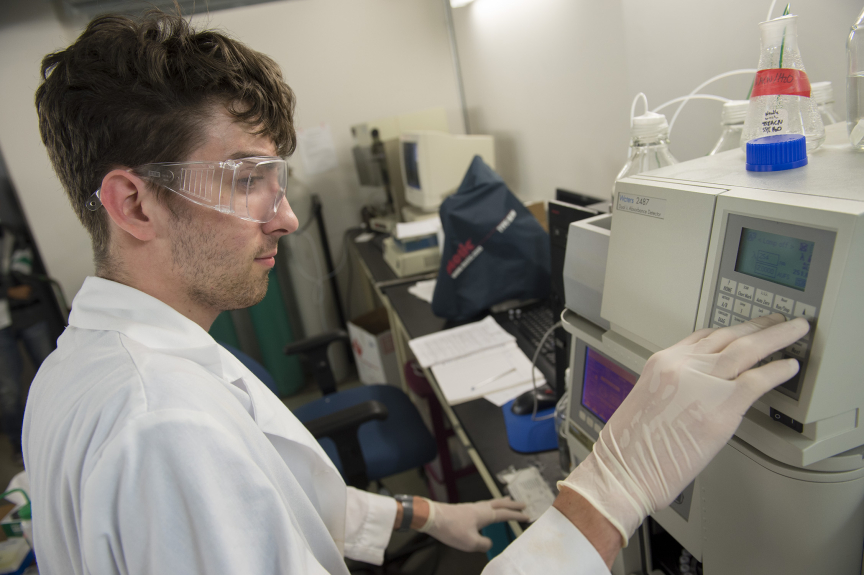Second year that Rutgers holds top spot for federal R&D funding; first year in number one position for funding from all sources, says leading industry publication
NEW BRUNSWICK, N.J. – For the second year in a row, Rutgers University leads U.S. universities in federal funding for chemistry research and development, according to an article in a leading industry publication. And for the first time, Rutgers ranks tops in the nation for chemistry research and development funding from all sources – including federal, state, industry, foundation and institutional.
The rankings, reported in the Dec. 9 issue of Chemical and Engineering News, are based on figures compiled by the National Science Foundation for the year 2011, the most recent available.
These record-setting figures – $33.2 million for federally funded R&D and $38.8 million for funding from all sources – represent a 14.1 percent and 13.7 percent respective increase over the previous year. This year, Rutgers displaces the California Institute of Technology for the overall top spot.

“Funding for chemistry research at Rutgers has been in the top 10 by these measures for the past decade or more,” said Roger Jones, chair of the Department of Chemistry and Chemical Biology in the School of Arts and Sciences. “Being on top during the two most recent years is gratifying. It affirms our approach of collaborative and multidisciplinary research, especially in work closely related to the biological sciences.”
Rutgers chemistry professors began cultivating connections to the biological sciences during the 1970s, Jones said, and they have continued to build strength in chemical biology since the 1980s. The New Brunswick-based Department of Chemistry added the words “chemical biology” to its title in 2001. Today, several leading universities have similarly embraced chemical biology, reflecting how the tools and research techniques traditionally associated with chemistry are being used to investigate biological questions, including those involved with genetically related conditions, infectious diseases and drug development.
Rutgers’ top position in chemistry research is especially notable in New Jersey, with its concentration of chemical and pharmaceutical companies. This level of research funding helps the university attract and support high-quality faculty and students, train students for jobs in the state and increase opportunities for collaboration with New Jersey businesses.
“Our research contributes to knowledge that helps cure diseases and create materials and alternate energy resources to enhance our quality of life, while benefiting the economies of New Jersey and the country,” said Jones.
Another measure of the university’s strength in chemistry, said Jones, is the number of Rutgers centers and institutes that have been initiated or led by chemistry faculty or where chemistry faculty play major roles. These include the BioMaPS Institute for Quantitative Biology; the Center for Advanced Biotechnology and Medicine; the Center for Integrative Proteomics Research; the Institute for Advanced Materials, Devices and Nanotechnology; the New Jersey Center for Biomaterials; the Protein Data Bank; and the Waksman Institute of Microbiology.
Established in 1766, Rutgers, The State University of New Jersey, is America’s eighth oldest institution of higher learning and one of the nation’s premier public research universities. Serving more than 65,000 students on campuses, centers, institutes and other locations throughout the state, Rutgers is the only public university in New Jersey that is a member of the prestigious Association of American Universities.